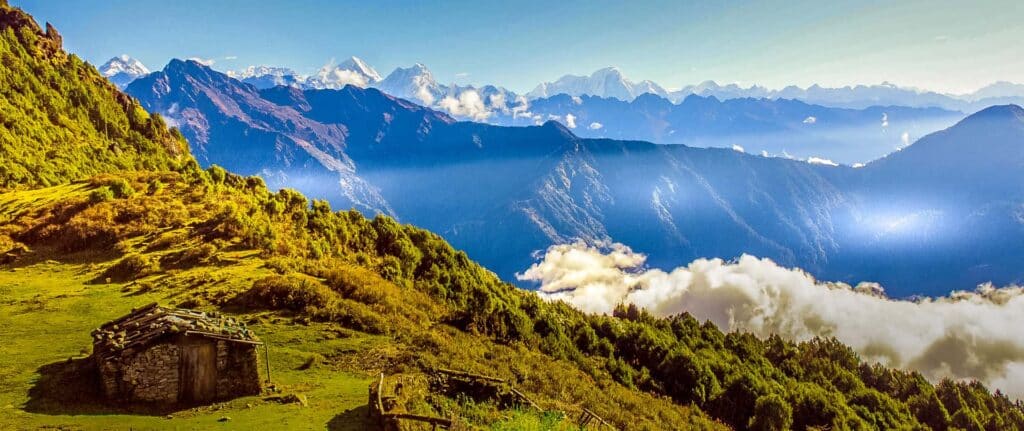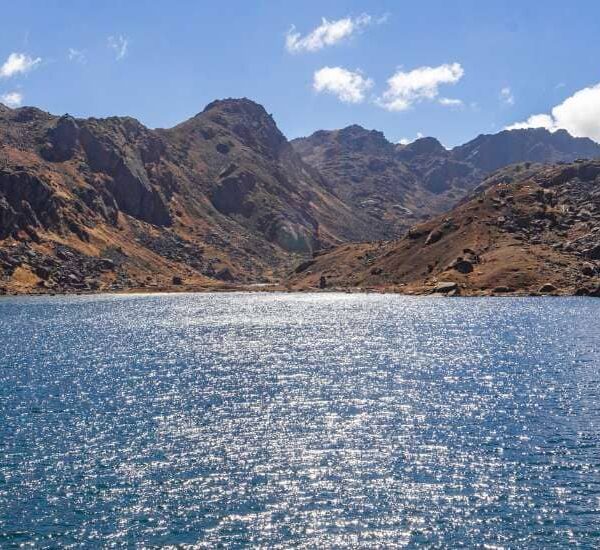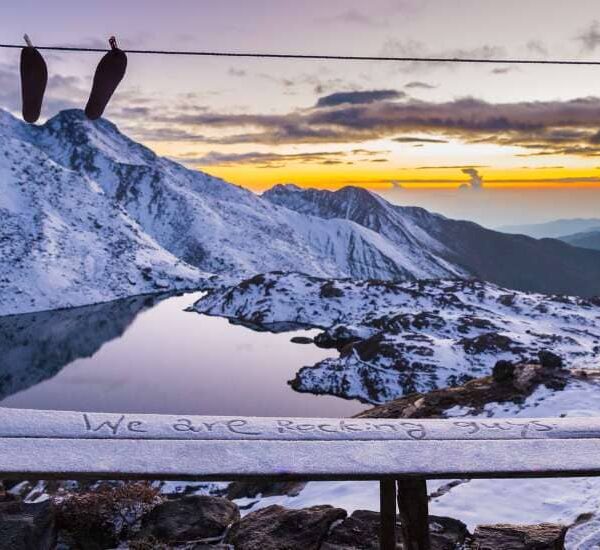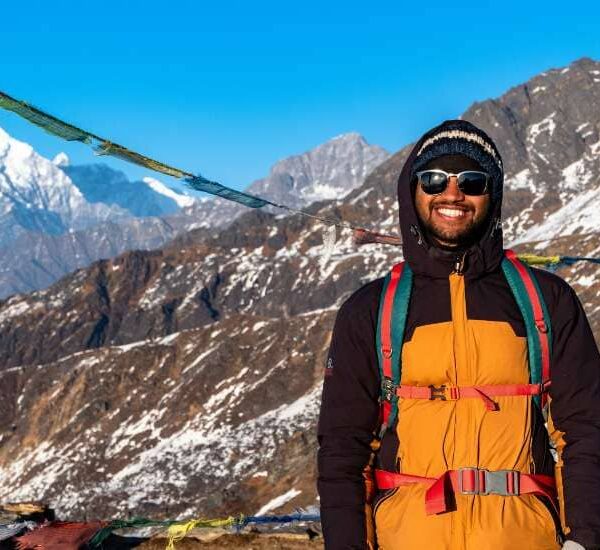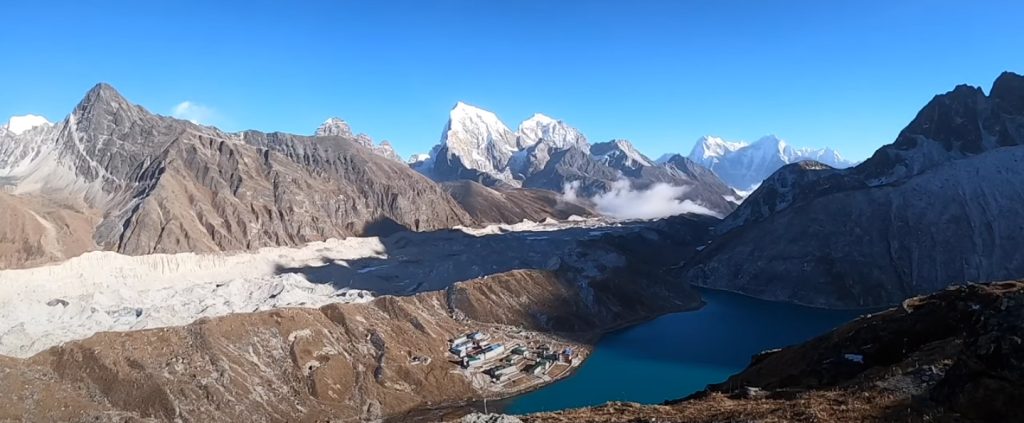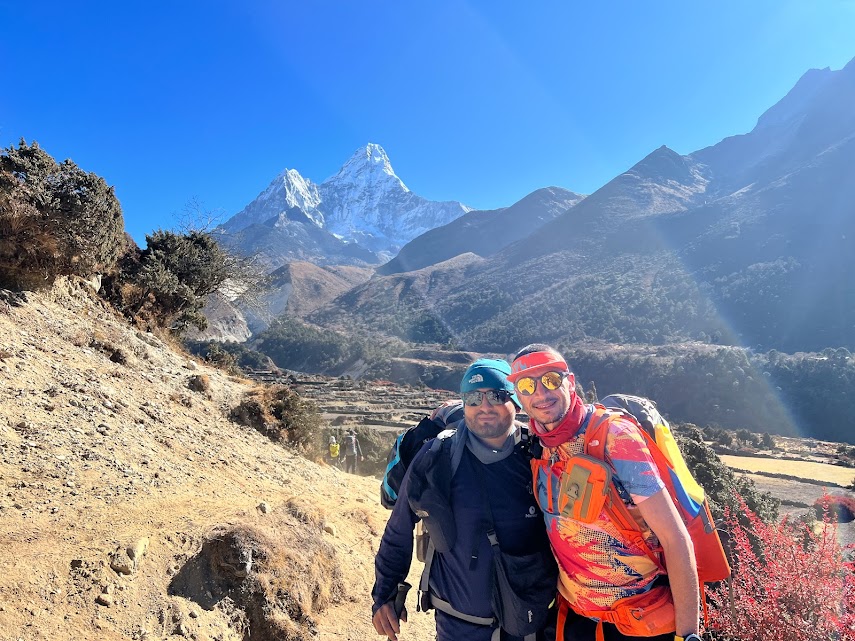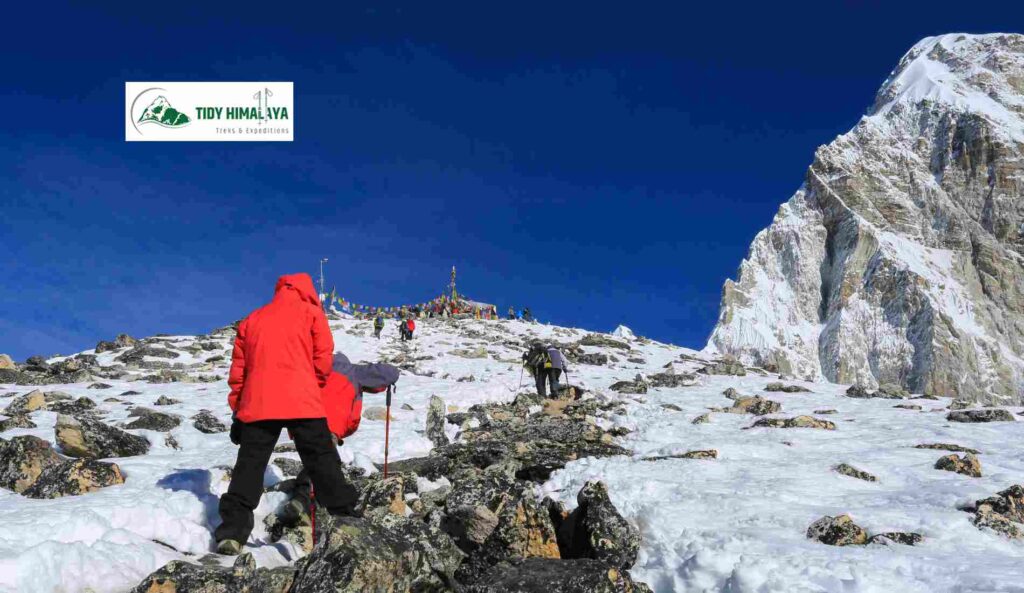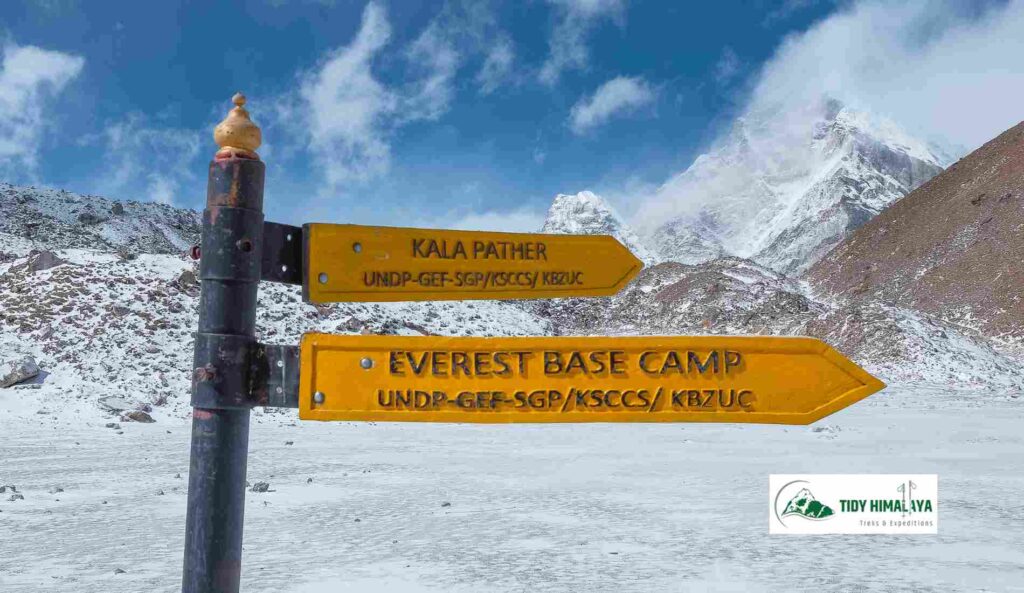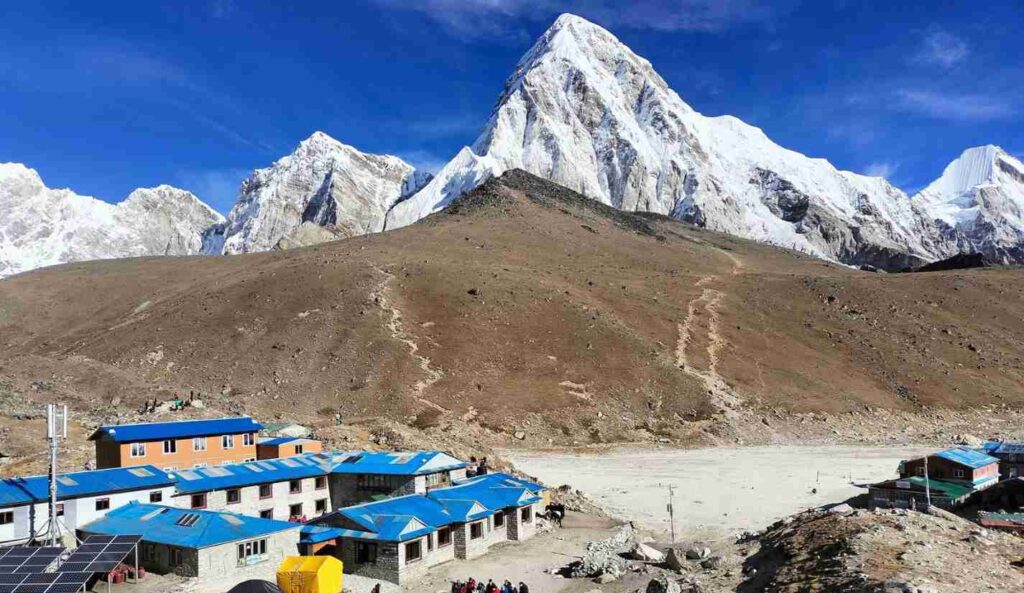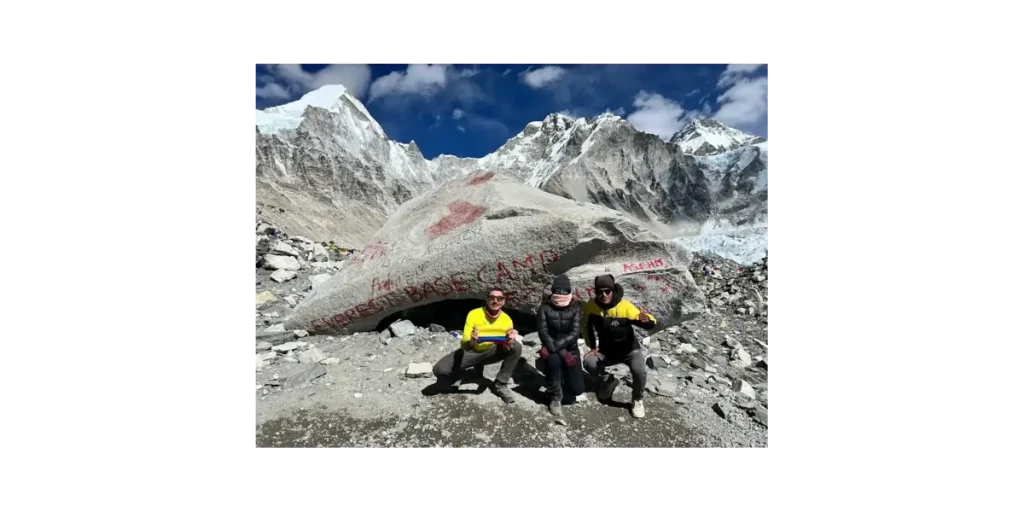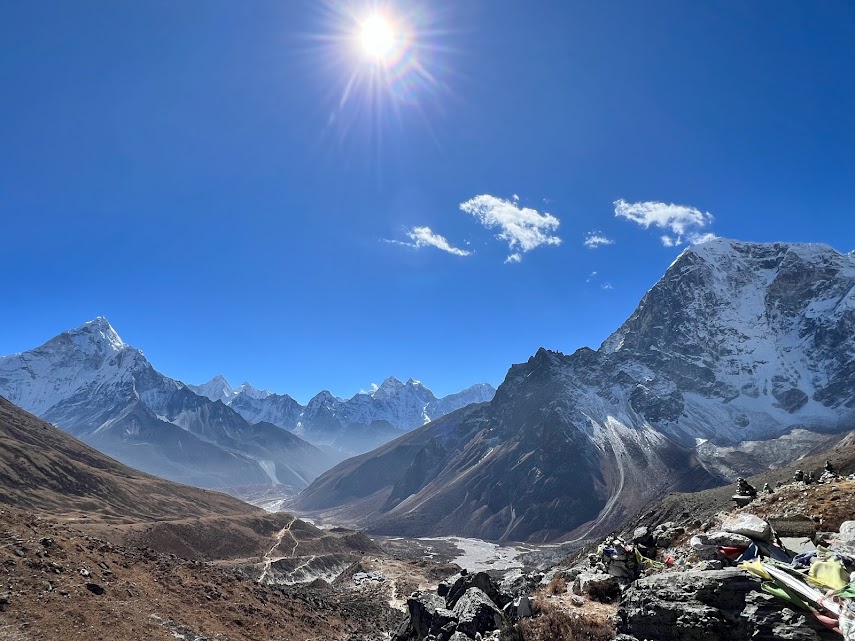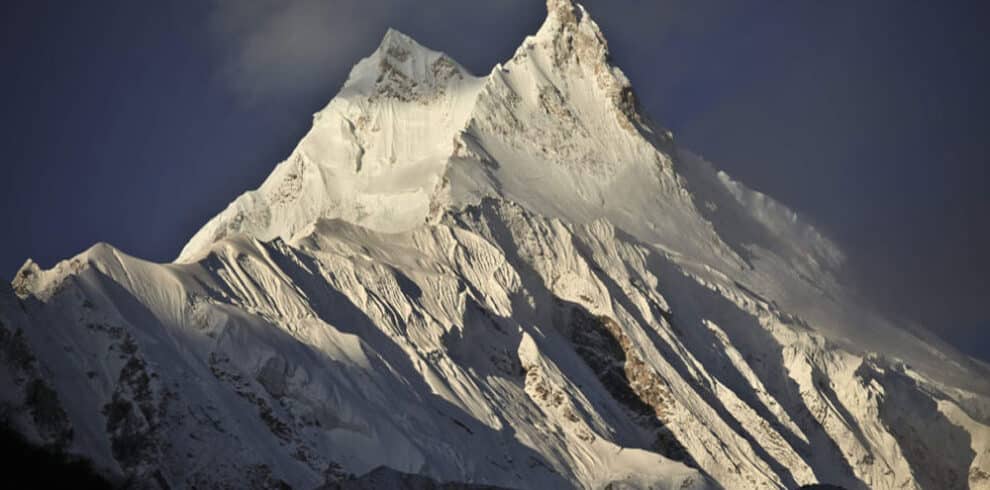Helambu Trek
Langtang Helambu Trek is the perfect trekking option for adventure seekers who have very limited time at their disposal. The Helambu Valley circuit is incredibly famous for its natural beauty and wonderful climate, with superb views of the magnificent snow-covered mountains. The Helambu trekking trail leads through two different national parks—Langtang National Park and Shivapuri National Park—and we can see the gorgeous village of Helambu, surrounded by apple orchards.
Within the Helambu Valley circuit, the area covers typical highland Sherpa villages along with beautiful rhododendron and pine forests. The Helambu Trek lies just to the east of Kathmandu, at a maximum elevation of 3510 meters. The Hyolmo people’s traditional decorations in their kitchens and dining areas are quite motivating, and their dress and varieties of jewelry reflect their own traditional style. The Helambu trek is a simple and enjoyable trip conducted at a typical altitude of 3500 meters.
We begin our 9-day trip in Kathmandu with a visit to UNESCO World Heritage sites. The next day, we will start heading to the Helambu treks, which will offer you an extraordinary encounter with the local culture and lifestyle of Hyolmo Sherpa, Tamang ethnicity, and highlanders.
We provide you with an extraordinary trek on the Helambu Valley circuit, leaving you with wonderful and enjoyable memories.
Helambu Trek
- Discover the charming village of Melamchi Gaun.
- Feel the warmth of Tamang and Sherpa people.
- Offers spectacular views of breathtaking peaks, from Mt. Manaslu to Mt. Gaurishankar.
- Hike through Sherpa and Tamang villages and immerse yourself in their local culture.
- The sunrise and sunset views from Chisopani are truly incredible.
Langtang Gosaikunda Trek: Complete Itinerary and Information
Upon your arrival at Tribhuvan International Airport, we offer you pick up facility from the airport and manage your stay at the most comfortable hotel in the city. You get to meet the team of trekkers and together we prepare for the trek.
Today would be the most exhilarating day where you will be introduced to the most pious Hindu and Buddhist religious places that are listed in the UNESCO World Heritage sites and elucidates you to the entire mysticism over its existence Pashupatinath temple, Boudhanath stupa, Patan Durbar Square, and Swayambhunath stupa.
We leave Kathmandu in the morning for Syabrubesi, a village that is also the starting point for treks into the Langtang valley. Our journey will be on a winding road through frequent switchbacks. On a clear day, we get to enjoy outstanding views of Manaslu, Annapurna, and Ganesh Himal. Our trek for today ends with a descent into the small village of Syabrubesi.
We begin our trek from Syabrubesi along the Langtang Khola. We move upward and downward simultaneously through oak and rhododendron forests. After crossing a bridge over the Langtang Khola (tiny river), we ascend on a steep trail which will lead us to the Lama Hotel.
We continue ascending from Lama Hotel and enjoy the mountain landscape with abundant waterfalls. As we reach the green meadows of Ghoda Tabela, we begin to see the white peaks of the Langtang range. Our trail continues to climb up the widening valley, passing a few temporary settlements used by herders. We pass by a Buddhist monastery before reaching the Langtang village, which was affected by the April 2015 earthquake.
We will start our journey to Kyangjin Gompa, a principal monastery of the region. We go through water mills, prayer wheels, Chortens, with sacred mounds of rocks with inscriptions carved on them. We also pass by the largest mani wall in Nepal, made from stone with prayers written on them. After the short trek, we explore the Buddhist shrine in Kyangjin Gompa and surrounding areas with the amazing views of the mountains.
We spend the whole day exploring Tserko Ri which will also help us acclimatize to the high altitude. We begin early in the morning. The trek passes through yak pastures before ascending to Tserko Ri. The sunrise view from the top of Tserko Ri is extraordinary. We get to explore the beautiful monastery while enjoying views of the Himalayas, glaciers, birds, and yaks.
Today after breakfast, we will learn about the people of Langtang and their centuries-old struggle in this valley, enduring natural disasters while maintaining ancient Tibetan Buddhist practices. Their livelihood, which depends on cows, sheep, yaks, and horses, reflects the unique Bhotia culture. After that, we will start our journey down to see the influence of another ethnic group, the Tamang, in the Langtang valley. Overnight at Thulo Syapru.
On our way to Sing Gompa, we will first come across a village called Dimsa. The trail further continues less steeply, through rhododendron, hemlock, and oak forests to Sing Gompa. Along the journey, we will catch a wonderful glimpse of Langtang Himal and Langtang valley.
The trail initially passes through an area entirely dominated by rhododendron and then through a forested area. The area between Sing Gompa and Laurebina Yak is a sanctuary for the red panda, an endangered species that the Nepalese call "cat bear." We will then climb a wider route through alpine country to arrive at Gosainkunda. We will explore the Lake region.
The route towards Ghopte ascends uphill and through moraines. After passing three other small lakes, we will further ascend and cross Laurebina La (4,609m/15,121ft). The path then goes downhill to Phedi. Continue to walk up and down, crossing rocky hills with pine and rhododendron trees.
Today the trek continues with ups and downs through the forest and walking on a ridge of a hill. We can also have a good view of Tadhi valley and Helambu and cross Thadepati Pass (3,690m). The trail continues through the dense forest to Magen Goth, from where the view of Langtang range and the Gosaikunda peak is dramatic. After that, we will reach Kutumsang (2,470m). Overnight at Kutumsang Lodge.
Today's trek continues downhill to Gul Bhanjyang (2,130m) and Pati Bhanjyang (1,830m), crossing through villages inhabited by the Tamang and Sherpa people with their unique culture and old villages. After Pati Bhanjyang, the trail leads up to Chisapani (2,215m), from where there is an awesome view of the Ganesh Himal range and Langtang range. Overnight at Chisopani.
Today we will trek up to Borlang Bhanjyang (2,430m) and then descend through Tamang villages, farmland, dense forest, and Shivapuri National Park until we reach Sundarijal. From there, we will catch a private car and return to Kathmandu and drop you at your hotel. The rest of the time can be spent shopping for gifts and souvenirs from Nepal for your family and friends. There will be a farewell dinner (Nepali Food) to celebrate the successful completion of our journey. Overnight in Kathmandu.
Your wonderful adventure in Nepal comes to an end today. We wish you all the best. A representative will take you to the airport approximately 3 hours before your scheduled flight.
Langtang Gosaikunda Helambu Trek Cost Includes & Excludes
Cost Includes
- Pick up and drop off from and to the International airport.
- 3-night hotel in Kathmandu (first two nights and last one night).
- Langtang National Park Permit.
- TIMS (Trekking's Informational Management System) Card.
- One porter for each two people.
- Accommodation in tea houses twin sharing (private room/ Shared bathroom).
- 3 Meals a day – breakfast, lunch, Dinner during the trek (Anything from the menu).
- All land transportation.
- Sightseeing tour car A/C with driver.
- Farewell dinner at Nepalese cultural restaurant after the trek in Kathmandu.
- All taxes and Company service charges.
Cost Excludes
- Nepal Visa fee (bring accurate USD cash and two passport size photographs).
- International airfare to and from Kathmandu.
- Lunch and Dinner in Kathmandu.
- Monument sites entrance fees while sightseeing in Kathmandu.
- Excess baggage charges.
- Extra night accommodation in Kathmandu because of early arrival, late departure, and earlier return from the mountain (due to any reason) than the scheduled itinerary.
- Travel and rescue insurance.
- Personal expenses (phone calls, internet / Wi-Fi, laundry, bar bills - tea/coffee, hot chocolate, juice, beer, battery recharge, extra porters, bottled or boiled water, shower etc.).
- Tips for guides and porters (Tipping is expected, but not compulsory).
FAQs
The Helambu region is located in the Langtang National Park of Nepal, in the Sindhupalchowk district, which is about 80 km northeast of Kathmandu. The Helambu Valley Trek is one of the most accessible and short treks, offering stunning Himalayan views. It’s an ideal option for trekkers who have limited time or want to experience the beauty of Nepal’s mountains without venturing far from Kathmandu.
Yes, the Helambu Valley Trek is definitely worth it. It offers one of the most comfortable trekking routes in Nepal, with stunning views of the Annapurna, Manaslu, Ganesh, Langtang, Jugal, Rolwaling, and Khumbu Himalayan ranges. Along the way, trekkers can experience the authentic lifestyle of the Tamang and Sherpa communities that reside in the region. This trek provides an excellent combination of natural beauty, cultural immersion, and a relatively short duration, making it a highly recommended trek near Kathmandu.
Yes, the Helambu Valley Trek is an excellent option for beginner trekkers. It is classified as a comfortable trek with steady and manageable inclines and declines. The route takes you through lush green forests of rhododendron and fir trees, offering stunning views of the Himalayas. The trek is relatively easy, making it a perfect choice for those new to trekking but still seeking adventure and natural beauty.
During the Helambu Valley Trek, trekkers can enjoy breathtaking panoramic views of several mighty peaks, provided the weather conditions are favorable. The trek offers views of eight-thousanders like Mount Everest (8,848.68m), Manaslu (8,163m), Annapurna (8,091m), and Cho Oyu (8,188m), along with a stunning array of snow-capped peaks from various Himalayan ranges. These include the Annapurna, Mansiri, Ganesh, Langtang, Rolwaling, and Khumbu Himalayan ranges.
Yes, the Helambu Valley Trek offers opportunities to encounter various wildlife species from the midlands and Himalayan regions. Some of the animals you might see include the Himalayan Black Bear, Musk Deer, Snow Leopard, Red Panda, and several species of monkeys, such as the Gray Langur. The region is also home to around 200 species of birds, including the Himalayan Monal, Koklass Pheasant, White-tailed Nuthatch, Black-throat Sunbird, Himalayan Cuckoos, and Satyr Tragopan. If you’re interested in bird watching, it’s recommended to carry a pair of binoculars, as the Helambu region provides excellent opportunities to observe these majestic creatures.
At the highest point of the Helambu Valley Trek, the oxygen level will be around 60% of sea level. The atmospheric pressure and reduced oxygen levels may be noticeable but typically do not pose a significant threat of altitude sickness. However, trekkers are advised to monitor for any symptoms of altitude-related illnesses and inform their guides and team leaders if they experience any discomfort.

